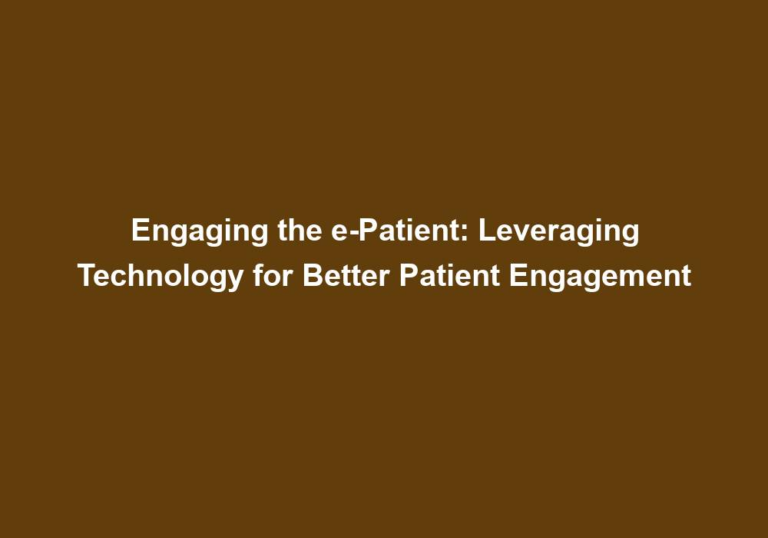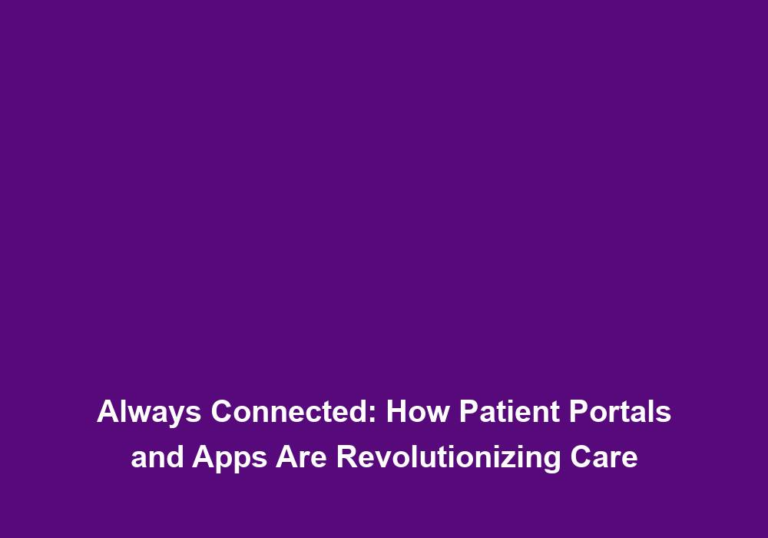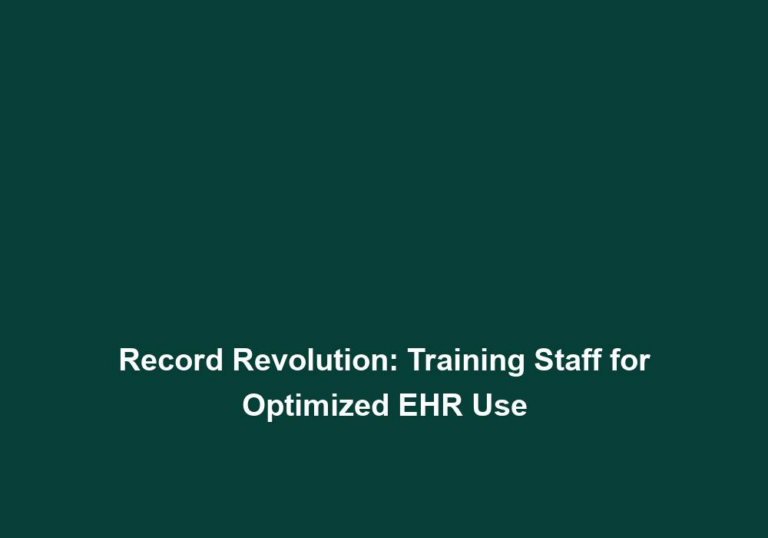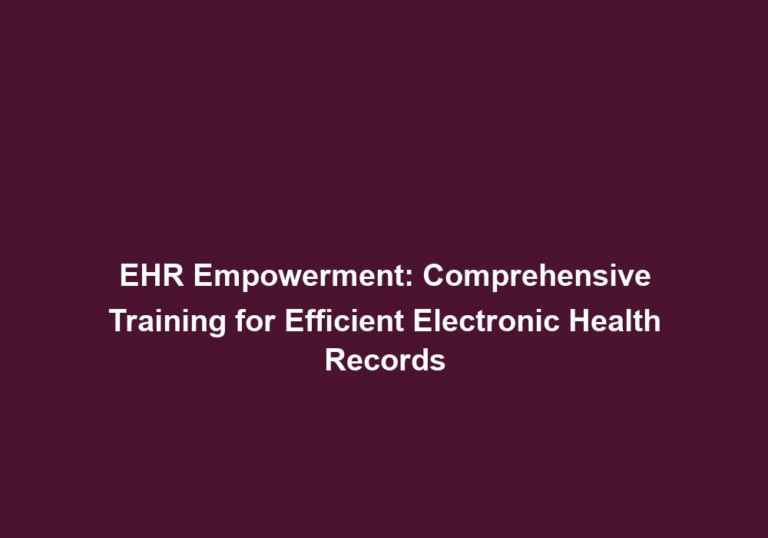Defending Data: Cybersecurity Protocols for Modern Medical Institutions
In today’s digital age, medical institutions are increasingly vulnerable to cyber threats. As technology advances, so do the risks associated with storing and managing patient data. It is essential for medical organizations to establish robust cybersecurity protocols to protect sensitive information and ensure the trust and safety of their patients. This article will explore various strategies and best practices that modern medical institutions can implement to enhance their cybersecurity defenses.
Understanding the Threat Landscape
Before delving into cybersecurity protocols, it is crucial to comprehend the threats that medical institutions face. Cyber criminals are constantly evolving and devising new methods to exploit vulnerabilities in healthcare systems. Some common cyber threats in the medical sector include:
-
Phishing Attacks: These involve using deceptive emails or messages to trick employees into disclosing sensitive information. Phishing attacks often appear to come from trusted sources, such as colleagues or reputable organizations, making them difficult to identify. Medical institutions should educate their employees about the signs of phishing attempts and provide regular training on how to recognize and report them. Implementing email filters and spam detection systems can also help prevent phishing attacks from reaching employees’ inboxes.
-
Ransomware: This malicious software encrypts data and demands a ransom in exchange for its release. Ransomware attacks can have devastating consequences for medical institutions, as they can lead to the loss of critical patient data or disrupt essential services. To protect against ransomware, medical institutions should regularly back up their data and ensure that backups are stored offline or in secure, isolated environments. Employing robust antivirus and anti-malware solutions can also help detect and prevent ransomware attacks.
-
Data Breaches: Unauthorized access or theft of sensitive patient information, which can lead to identity theft or financial fraud. Data breaches can occur due to vulnerabilities in the network infrastructure, weak access controls, or insider threats. Medical institutions should implement strong access controls, such as multi-factor authentication and role-based access, to restrict access to sensitive data. Regularly reviewing user accounts and access privileges can help identify and address any potential security gaps.
-
Insider Threats: Employees with access to confidential data may intentionally or unintentionally compromise security. Medical institutions should foster a culture of cybersecurity awareness among employees and provide regular training on data handling procedures. This includes educating staff members on the proper handling, storage, and disposal of sensitive patient data to minimize the risk of unauthorized access. Implementing monitoring systems and access logs can also help detect and mitigate insider threats.
By understanding these threats, medical institutions can better prepare for potential breaches and take preventive measures to protect patient data.
Establishing Strong Access Controls
One of the fundamental steps in safeguarding patient data is implementing robust access controls. This involves restricting access to sensitive information only to authorized personnel. Here are some essential access control measures:
-
User Authentication: Implementing strong user authentication methods, such as multi-factor authentication, to ensure that only authorized individuals can access sensitive data. Multi-factor authentication adds an extra layer of security by requiring users to provide multiple pieces of evidence to verify their identity, such as a password and a unique code sent to their mobile device.
-
Role-Based Access: Dividing employees into different roles and granting access privileges based on their responsibilities. This minimizes the risk of unauthorized access to critical information. By assigning specific access permissions to each role, medical institutions can ensure that employees only have access to the data necessary for their job functions.
-
Regular Account Reviews: Conducting periodic reviews of user accounts and access privileges to ensure that access is granted only to those who require it. This includes removing access for employees who no longer need it or have changed roles. By regularly reviewing and updating access privileges, medical institutions can minimize the risk of unauthorized access due to outdated permissions.
Implementing strong access controls not only protects patient data but also helps medical institutions comply with regulatory requirements, such as the Health Insurance Portability and Accountability Act (HIPAA) in the United States.
Employing Encryption Techniques
Encrypting sensitive data is a vital aspect of protecting patient information from unauthorized access. Encryption transforms data into an unreadable format, which can only be deciphered with the correct decryption key. Medical institutions should consider the following encryption practices:
-
Full Disk Encryption: Encrypting the entire hard drive or storage system to protect data in case of physical theft or loss. Full disk encryption ensures that even if a device is stolen, the data stored on it remains inaccessible to unauthorized individuals.
-
Data-in-Transit Encryption: Encrypting data while it is being transmitted between systems or over networks, preventing interception by hackers. Medical institutions should use secure communication protocols, such as Transport Layer Security (TLS) or Secure Sockets Layer (SSL), to encrypt data while it is in transit. Implementing virtual private networks (VPNs) can also provide an additional layer of encryption for remote access.
-
Secure Email Communication: Using encryption technologies to secure email communication containing sensitive patient information. Medical institutions can implement email encryption solutions that encrypt the content of emails and attachments, ensuring that only authorized recipients can access the information. Additionally, digital signatures can be used to verify the authenticity and integrity of email messages.
By employing encryption techniques, medical institutions can add an extra layer of protection to patient data, both at rest and in transit.
Conducting Regular Vulnerability Assessments
To stay one step ahead of cyber threats, medical institutions should conduct regular vulnerability assessments. These assessments involve identifying weaknesses in the network, systems, and applications that could be exploited by cyber attackers. Key steps in vulnerability assessments include:
-
Penetration Testing: Simulating cyber attacks to identify vulnerabilities and weaknesses in the network infrastructure. Penetration testing involves attempting to exploit vulnerabilities in a controlled environment to assess the effectiveness of existing security measures and identify areas for improvement. By conducting regular penetration testing, medical institutions can proactively identify and address vulnerabilities before they are exploited by cyber criminals.
-
Security Audits: Conducting comprehensive audits to assess the effectiveness of existing security measures and identify areas for improvement. Security audits involve reviewing the organization’s security policies, procedures, and controls to ensure they align with industry best practices and regulatory requirements. Medical institutions can engage third-party auditors or security experts to perform independent audits and provide objective feedback on their cybersecurity posture.
-
Patch Management: Ensuring that all systems are regularly updated with the latest security patches to address known vulnerabilities. Cyber attackers often exploit vulnerabilities in outdated software to gain unauthorized access to systems. Medical institutions should establish robust patch management processes to regularly update their systems with security patches released by software vendors. Automated patch management tools can help streamline this process and ensure timely updates.
By conducting regular vulnerability assessments, medical institutions can identify and address potential security weaknesses, reducing the risk of successful cyber attacks.
Educating Employees on Cybersecurity Awareness
Employees play a critical role in maintaining the security of medical institutions. Educating staff members on best cybersecurity practices is vital to prevent accidental data breaches. Some important aspects of employee cybersecurity awareness include:
-
Phishing Awareness Training: Regularly training employees to recognize and report phishing attempts to prevent falling victim to these attacks. Phishing awareness training should cover common phishing techniques, such as email spoofing, deceptive URLs, and social engineering tactics. Medical institutions can conduct simulated phishing campaigns to assess the effectiveness of training programs and identify areas for improvement.
-
Strong Password Policies: Implementing password policies that require employees to create strong and unique passwords, regularly updating them, and avoiding password reuse. Strong passwords should be long, complex, and include a combination of uppercase and lowercase letters, numbers, and special characters. Medical institutions can enforce password complexity rules and implement password management tools to facilitate secure password practices.
-
Data Handling Procedures: Educating employees on the proper handling, storage, and disposal of sensitive patient data to minimize the risk of unauthorized access. This includes guidelines on data encryption, secure file sharing, and secure printing practices. Medical institutions should also establish clear protocols for reporting security incidents and provide employees with the necessary resources to escalate potential threats.
By prioritizing cybersecurity awareness and providing regular training, medical institutions can empower their employees to become the first line of defense against cyber threats.
Implementing Incident Response and Recovery Plans
Despite robust cybersecurity protocols, medical institutions must be prepared for potential security incidents. Developing comprehensive incident response and recovery plans helps mitigate the impact of a breach and facilitates a swift and effective response. Key elements of incident response plans include:
-
Designating Incident Response Team: Establishing a team of experts responsible for handling security incidents and coordinating the response effort. The incident response team should include representatives from IT, legal, communications, and senior management to ensure a well-coordinated response. Medical institutions can also consider partnering with external incident response providers to augment their internal capabilities.
-
Creating Communication Protocols: Outlining communication channels and procedures to ensure timely and accurate dissemination of information during an incident. Medical institutions should have predefined communication protocols that specify who should be notified, how information should be shared, and how stakeholders should be kept informed throughout the incident response process. This includes establishing lines of communication with regulatory bodies, law enforcement agencies, and affected individuals.
-
Testing and Updating Plans: Regularly testing the incident response and recovery plans to identify any weaknesses or areas for improvement. Plans should be tested through simulated scenarios or tabletop exercises that simulate various types of security incidents. Lessons learned from incidents or changes in the threat landscape should be used to update and enhance the incident response plans on an ongoing basis.
By implementing comprehensive incident response and recovery plans, medical institutions can minimize the impact of security incidents and ensure a swift and coordinated response.
By implementing these cybersecurity protocols and best practices, modern medical institutions can significantly enhance their ability to defend patient data from cyber threats. Safeguarding sensitive information is not only essential for regulatory compliance but also for ensuring patient trust and maintaining the integrity of healthcare systems.







